Showing Spotlights 873 - 880 of 2780 in category All (newest first):
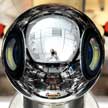 The 'Action Plan Nanotechnology 2020' introduces the Federal Government's inter-departmental support strategy for nanotechnology in the period 2016-2020. It thus pursues the objective of continuing to exploit the opportunities and potential of nanotechnology in Germany, without disregarding any potential risks to humans and the environment. Inn addition to a description of the status quo of national nanotechnology, for the first time after 10 years of inter-ministerial cooperation a conclusion is drawn on the progress that has been achieved from the point of view of the participating ministries, where potential gaps can be identified and therefore the need for action is derived with respect to future activities.
The 'Action Plan Nanotechnology 2020' introduces the Federal Government's inter-departmental support strategy for nanotechnology in the period 2016-2020. It thus pursues the objective of continuing to exploit the opportunities and potential of nanotechnology in Germany, without disregarding any potential risks to humans and the environment. Inn addition to a description of the status quo of national nanotechnology, for the first time after 10 years of inter-ministerial cooperation a conclusion is drawn on the progress that has been achieved from the point of view of the participating ministries, where potential gaps can be identified and therefore the need for action is derived with respect to future activities.
Nov 22nd, 2016
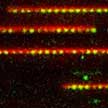 One reason why people are so excited about nanopore DNA sequencing is that the technology could possibly be used to create 'tricorder'-like devices for detecting pathogens or diagnosing genetic disorders rapidly and on-the-spot. Sequencing technologies have made it cheaper and faster to read the sequence of bases on a strand of DNA. A promising technology to take these advances further is nanopore sequencing. Yet, nanopores enable another important way to analyze DNA: genomes can also be mapped.
One reason why people are so excited about nanopore DNA sequencing is that the technology could possibly be used to create 'tricorder'-like devices for detecting pathogens or diagnosing genetic disorders rapidly and on-the-spot. Sequencing technologies have made it cheaper and faster to read the sequence of bases on a strand of DNA. A promising technology to take these advances further is nanopore sequencing. Yet, nanopores enable another important way to analyze DNA: genomes can also be mapped.
Nov 21st, 2016
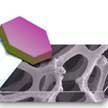 Efficient water splitting for large-scale, industrial applications requires highly active, low cost, and robust catalysts. Motivated by this challenge, enormous efforts have been devoted to developing cost-efficient alternatives including sulfides, selenides, phosphides, and many other nonprecious transition metal compounds. Now, scientists have shown for the first time that metals or metal hydroxides can be rapidly converted into phosphides at low temperature using a newly developed plasma-assisted route.
Efficient water splitting for large-scale, industrial applications requires highly active, low cost, and robust catalysts. Motivated by this challenge, enormous efforts have been devoted to developing cost-efficient alternatives including sulfides, selenides, phosphides, and many other nonprecious transition metal compounds. Now, scientists have shown for the first time that metals or metal hydroxides can be rapidly converted into phosphides at low temperature using a newly developed plasma-assisted route.
Nov 17th, 2016
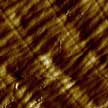 Caenorhabditis elegans, a free-living soil nematode, has become an important experimental model for biomedical research. This nematode has been successfully employed in genetics, ageing research, behavioral assays, drug screening and (nano)toxicology. In a new study, researchers report for the first time the effective imaging of the nanoscale structure of C. elegans nematodes' cuticle using atomic force microscopy operating in PeakForce Tapping mode. This mode allows imaging C. elegans nematodes both in air and in their native liquid environment.
Caenorhabditis elegans, a free-living soil nematode, has become an important experimental model for biomedical research. This nematode has been successfully employed in genetics, ageing research, behavioral assays, drug screening and (nano)toxicology. In a new study, researchers report for the first time the effective imaging of the nanoscale structure of C. elegans nematodes' cuticle using atomic force microscopy operating in PeakForce Tapping mode. This mode allows imaging C. elegans nematodes both in air and in their native liquid environment.
Nov 16th, 2016
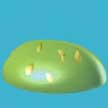 Scientists have now demonstrated in detail how chemical purity of perovskite precursors can affect the morphology of thin-film perovskite layers. While most studies concentrate on the exploration of processing conditions, the research team has investigated the purity levels of common perovskite precursor solutions and found a number of impurities that are critically important toward controlling the crystallization of perovskites. They observed that impurities that formed during the preparation of perovskite precursor solutions initiate formation of PbHPO3 nanoparticles, which helps to growth larger perovskite crystal grains resulting in higher solar cells efficiency.
Scientists have now demonstrated in detail how chemical purity of perovskite precursors can affect the morphology of thin-film perovskite layers. While most studies concentrate on the exploration of processing conditions, the research team has investigated the purity levels of common perovskite precursor solutions and found a number of impurities that are critically important toward controlling the crystallization of perovskites. They observed that impurities that formed during the preparation of perovskite precursor solutions initiate formation of PbHPO3 nanoparticles, which helps to growth larger perovskite crystal grains resulting in higher solar cells efficiency.
Nov 15th, 2016
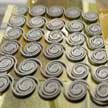 Researchers have demonstrated a fully stretchable energy harvester for thermal waste, which is very simple to fabricate and uses inexpensive substrate materials such polymers or paper. Thermoelectric generators (TEGs) promise a cheap and pragmatic way to obtain energy out of waste heat. The novelty of this work is to effectively integrate the high-performance of inorganic thermoelectric materials with the mechanical advantages of affordable organic materials (polymers, paper) and the use of innovative geometries that can be inherently stretched (spirals, helixes).
Researchers have demonstrated a fully stretchable energy harvester for thermal waste, which is very simple to fabricate and uses inexpensive substrate materials such polymers or paper. Thermoelectric generators (TEGs) promise a cheap and pragmatic way to obtain energy out of waste heat. The novelty of this work is to effectively integrate the high-performance of inorganic thermoelectric materials with the mechanical advantages of affordable organic materials (polymers, paper) and the use of innovative geometries that can be inherently stretched (spirals, helixes).
Nov 14th, 2016
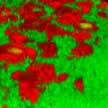 Researchers have demonstrated that nitric-oxide releasing nanoparticles interfere with Staphylococcus aureus (S. aureus) adhesion and prevent biofilm formation on a rat central venous catheters model of infection. Specifically, they demonstrated that a well studied nitric oxide-releasing nanoparticle platform (NO-np) has the potential to reduce the incidence and/or treat central venous catheter infections. The investigators examined the formation of staphylococcal biofilms by confocal and scanning electron microscopy and found that treatment of staphylococcal biofilms with NO-np significantly reduced biofilm thickness and bacterial number compared to control biofilms.
Researchers have demonstrated that nitric-oxide releasing nanoparticles interfere with Staphylococcus aureus (S. aureus) adhesion and prevent biofilm formation on a rat central venous catheters model of infection. Specifically, they demonstrated that a well studied nitric oxide-releasing nanoparticle platform (NO-np) has the potential to reduce the incidence and/or treat central venous catheter infections. The investigators examined the formation of staphylococcal biofilms by confocal and scanning electron microscopy and found that treatment of staphylococcal biofilms with NO-np significantly reduced biofilm thickness and bacterial number compared to control biofilms.
Nov 11th, 2016
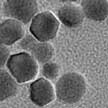 Researchers have, for the first time, used naturally occurring bacterial magnetic nanoparticles (BMPs) - magnetosome extracted from magnetotactic bacteria - to substitute man-made nanoparticles for photothermal cancer therapy. Compared with engineered magnetic nanoparticles, BMPs have specific features such as large-scale production, monodispersity, good biocompatibility, high crystallinity, and close-to-bulk magnetization besides being covered with a lipid bilayer. This layer of biomembrane is particularly useful as it removes the need for a postsynthetic surface modification step for escaping destruction by the body's immune system.
Researchers have, for the first time, used naturally occurring bacterial magnetic nanoparticles (BMPs) - magnetosome extracted from magnetotactic bacteria - to substitute man-made nanoparticles for photothermal cancer therapy. Compared with engineered magnetic nanoparticles, BMPs have specific features such as large-scale production, monodispersity, good biocompatibility, high crystallinity, and close-to-bulk magnetization besides being covered with a lipid bilayer. This layer of biomembrane is particularly useful as it removes the need for a postsynthetic surface modification step for escaping destruction by the body's immune system.
Nov 10th, 2016
 The 'Action Plan Nanotechnology 2020' introduces the Federal Government's inter-departmental support strategy for nanotechnology in the period 2016-2020. It thus pursues the objective of continuing to exploit the opportunities and potential of nanotechnology in Germany, without disregarding any potential risks to humans and the environment. Inn addition to a description of the status quo of national nanotechnology, for the first time after 10 years of inter-ministerial cooperation a conclusion is drawn on the progress that has been achieved from the point of view of the participating ministries, where potential gaps can be identified and therefore the need for action is derived with respect to future activities.
The 'Action Plan Nanotechnology 2020' introduces the Federal Government's inter-departmental support strategy for nanotechnology in the period 2016-2020. It thus pursues the objective of continuing to exploit the opportunities and potential of nanotechnology in Germany, without disregarding any potential risks to humans and the environment. Inn addition to a description of the status quo of national nanotechnology, for the first time after 10 years of inter-ministerial cooperation a conclusion is drawn on the progress that has been achieved from the point of view of the participating ministries, where potential gaps can be identified and therefore the need for action is derived with respect to future activities.
 Subscribe to our Nanotechnology Spotlight feed
Subscribe to our Nanotechnology Spotlight feed





